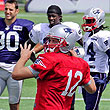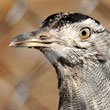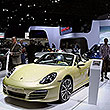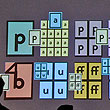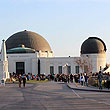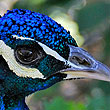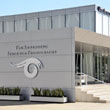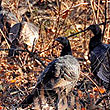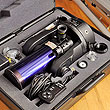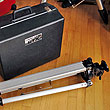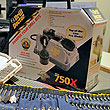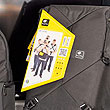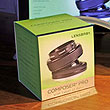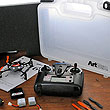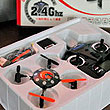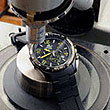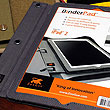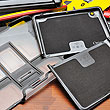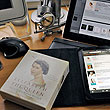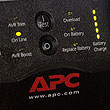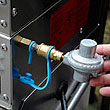Mention "brainwave detection" and people think of its tantalizing potentials: controlling things with our thoughts; mind-reading; and of course, mind-control. Tantalizing, but the reality is a still quite a bit different. The electromagnetic brain waves we can detect with an external sensor are a very low resolution version of what is going on inside the head.

NeuroSky MindWave Mobile is one of those emerging technologies searching for its place in the world. At this point, EEG sensors such as the MindWave can only give us a very rough feel of what is going on in our noggins. It is not yet able to distinguish anything specific. A simplistic analogy would be like listening to music through a thick wall and hearing the thumping of the bass, but not any of the lyrics. However, the signals are still informative and can be useful, especially in learning how to relax or focus via bio-feedback.


The MindWave Mobile came with a disc of software to use with the headset. The Tutorial program was helpful in confirming that the Bluetooth connection and headset were functioning properly. It was also helpful in showing first-time users how the headset responds (distracted, focused, calm). Another program included on the disc was the BrainWave Visualizer. It is a real-time graph of various frequencies as detected by the MindWave sensor.
NOTE: We did run into a problem installing the software on a Macbook Pro until tech support determined that it was because OSX 10.8.2's GateKeeper was preventing its installation. Relaxing the security setting solved the problem.

Brain waves were first segmented into categories in the 1930s and 1940s. They originally fell into four groups of frequencies. Additional groups have been added over the years. The following are the six most often recognized brain wave groupings:
- Delta waves (below 4 hz) - Detected during deep sleep. Originating from the thalamus or the cortex.
- Theta waves (4-7 hz) - Detected during sleep, deep relaxation (like hypnotic relaxation), and visualization. Originating from the hippocampus or the cortex.
- Alpha waves (8-12 hz) - detected when awake, but relaxed and calm
- Mu wave (8–13 Hz) - an alpha variant associated with the motor cortex
- Beta waves (23-30 hz) - detected when actively thinking
- Gamma wave (25–100 Hz) - transcendental meditative state?
While fun to look at, the Visualizer will not be useful for what we had hoped to do with the MindWave. As fascinating as NeuroSky's BrainWave Visualizer is, it has no mechanism for capturing the raw EEG data, which shows the transition between the different states of consciousness. After some digging, we think the MyndPlay Pro 2.0 application from MyndPlay should be able let us record what we need.
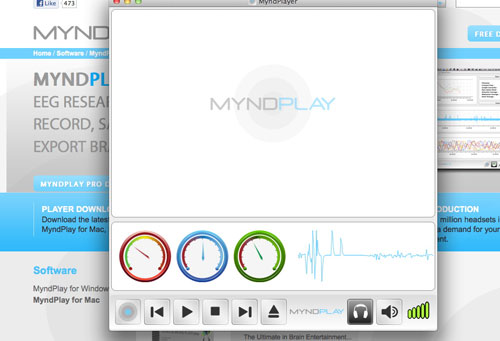
Like the Brainwave Visualizer, the MyndPlay Pro has some simple displays for the level of "Attention" and "Meditation." However, it is also capable of recording all of the raw EEG data (Alpha, Beta, Theta, Delta, Gamma) at a sampling rate of 512Hz. The data may be exported in CSV format for analysis by spreadsheet and other data-crunching programs.
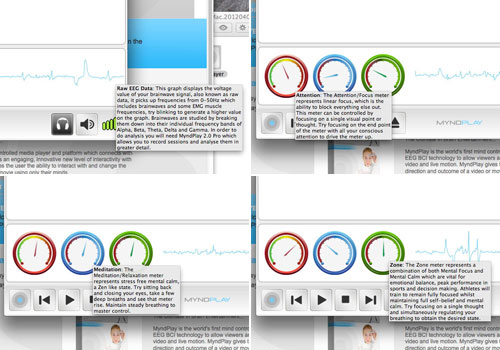
We could record our EEG data with MyndPlay Pro running on the laptop, but it would be easier if we did not have to always lug the computer around with us. Data acquisition will be more convenient if we did could use the iPhone or the iPad as the recording device. Fortunately, MyndPlay does have an app which will do exactly that. It is very basic, but it does exactly what we need...record the raw EEG data. We will have a more detailed look at the MyndPlay Pro software once we have acquired a collection of brainwave data sets.
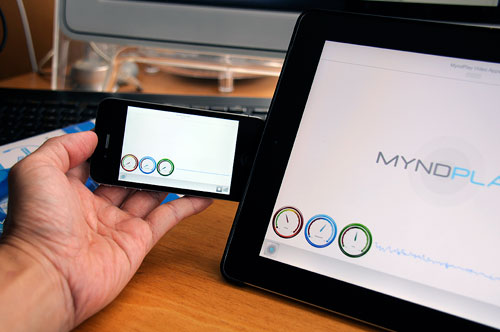
Our next step will be to monitor and record our EEG while watching TV, reading a book, and falling asleep. The goal will be to see what we can see. We are not sure where all of this will take us, but we are eager to venture forth and find out :-) [Permalink] -MyndPlay Software Install
|



